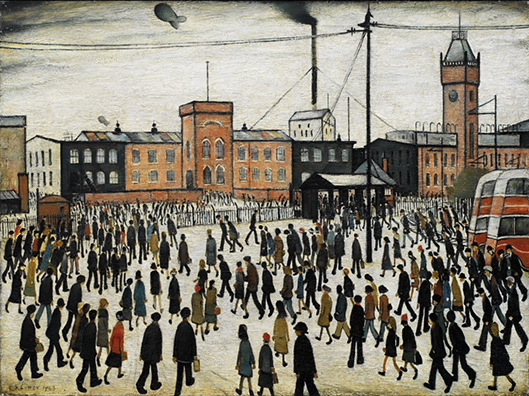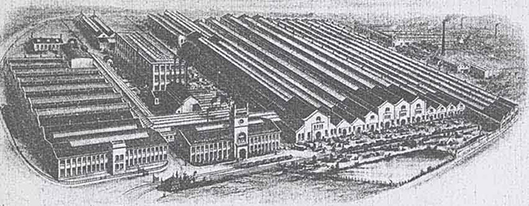Contact Us

by Sarah Newine Moore
What are the origins of the term Design for Manufacture and Assembly DfMA? In 1948 the industrial engineer and educator Geoffrey Boothroyd started his career as an apprentice in the Mather and Platt factory in Manchester. He would have worked with some of the figures immortalised in LS Lowry’s painting.

This factory, a major employer in Manchester, produced mainly large centrifugal pumps. It was there that Boothroyd gained his insight into industrial production lines.
By the 1970s, such production lines were radically changing and Boothroyd was teaching in the University of Massachusetts. His team’s research aimed to provide designers with tools to drive efficiencies in automatic and manual assembly of products in factories. This research built upon other contemporary studies in European Universities and industry. Boothroyd and his team’s work resulted in a piece of software: Design for [Automatic and Manual] Assembly (DFA) for the Apple II Plus.
Two of the world’s biggest companies, Ford and General Motors, claimed to have saved billions by adopting DFA, and interest in this design methodology grew exponentially. Boothroyd Dewhurst Inc. was established in 1983 and the team developed their next tool for designers: Design for Manufacture (DFM). This additional module of the software enabled a series of design options that could be accurately costed prior to manufacture, allowing for further efficiencies on the production line. Accompanying the development of the DFM and DFA software came the publication: Product Design for Manufacture and Assembly1 and so the term Design for Manufacture and Assembly DfMA was born.

DfMA is the combination of the two design methodologies: Design for Manufacture DFM (the design of individual parts of an assembly) and Design for Assembly DFA (how to assemble all the parts to make the final product.)
The core principles of DFM are to simplify the design of a product by reducing the number of constituent parts, and by selecting the most cost effective materials and processes in their manufacture. While DFA aims to minimise the number of operations and therefore reduce assembly time and cost of a product.
The success of the DfMA design methodology has led to its adoption across a wide range of professions including the construction industry in the UK.
In the construction industry, DfMA relates to the prefabrication of building elements off-site in controlled factory environments for on-site assembly. Enabling efficiencies in time, labour and cost.
Next month: DfMA Part 2 – DfMA and Mass Timber Construction
Early examples of Eurban’s DfMA approach:
Notes to text
Image credits